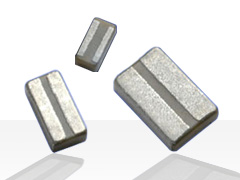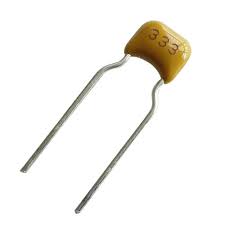
Effects of ESL on capacitor performance
- Posted by doEEEt Media Group
- On August 4, 2020
- 0
Capacitors are widely used in electronic circuits for storing and managing energy. Typical applications include filtering, decoupling, energy storage, and tuning. Some applications such as decoupling demand low impedance, high ripple current capability, and excellent surge performance. Inductance is one of the key parameters to consider when selecting a capacitor for high-speed digital circuits.
In theory, capacitors are commonly considered as ideal components. However, practical capacitors are non-ideal and contain parasitic elements that can significantly affect their performance. These non-ideal characteristics are mainly dependent on materials and construction methods. The equivalent circuit model of a practical capacitor consists of equivalent series resistance (ESR), equivalent series inductance (ESL), and insulation resistance. The electrodes and the leads of a capacitor contribute to the resistive component and the inductive component while the dielectric material contributes the insulation resistance.
ESR is a resistive component that causes some energy to be lost in the form of heat. On the other hand, ESL causes a magnetic field to buildup in devices. This buildup of magnetic field interferes with how the current rises to the peak and falls back. Generally, parasitic inductance and internal resistance are major issues in high-speed digital circuits. As operation speeds of digital circuits increase, the demand for capacitors with better performance and efficiency continues to grow. One way of enhancing capacitor performance is by reducing internal inductance. Considerable inductance reduction is achieved by using correct materials and suitable construction techniques.
The need to maintain high performance, miniaturize circuit, and control cost is the main driver towards new types of capacitors. Using advanced technologies, manufacturers are producing new types of capacitors to meet the performance requirements of today’s electronic circuits. High-performance capacitors with very low ESLs are increasingly replacing conventional ceramic, tantalum, and aluminum capacitors. Tantalum polymer capacitors and aluminum polymer capacitors are some of the new solutions for decoupling applications in high-performance circuits. These very low inductance capacitors occupy much less space and the cost of producing them is reasonable.
Parasitic Inductance in Ceramic Capacitors
Ceramic capacitors are commonly used in electronic circuits for decoupling applications. The equivalent circuit model of a typical multilayer ceramic capacitor consists of three elements: the capacitor, series resistance, and parasitic inductance. For decoupling applications in high-speed digital systems, the inductance of an MLCC is an important factor. This is because the ripple voltage is dependent on inductance. The current loop is the key physical characteristic that determines equivalent series inductance. ESL increases with an increase in the size of the current loop.
In chip capacitors, equivalent series inductance is greatly determined by the distance between terminations. Since capacitors with a smaller current loop have lower inductances, reducing the distance between terminations of a capacitor helps to reduce the size of the current loop. Using opposing current loops helps to further reduce equivalent series inductance in surface mount capacitors. Significant reduction in inductance can be achieved by optimizing the architecture of a surface mount capacitor.
In bypass capacitors, the resonant frequency is dependent on parasitic inductance. The effect of this parasitic component becomes more prevalent in high-frequency applications. It is, therefore, critical for design engineers to measure the inductance of capacitors for high-speed digital circuits.
In PCB mounted decoupling capacitors, inductance is mainly determined by the mounting pad structure. Current flows through the loop described by these three elements: capacitor height, power plane spreading, and pad layout. Since equivalent circuit inductance increases with an increase in the size of the current loop, it is minimized by ensuring that the power (Vdd) and ground (Gnd) vias are close to each other. Other ways of minimizing inductance include selecting a suitable pad layout design and using shorter vias.
High capacitance capacitors tend to have high ESLs, and vice versa. When designing digital circuits, engineers should consider both capacitance and equivalent series inductance. In high-speed electronic circuits, low inductance multilayer ceramic capacitors are placed close to the load. As compared to conventional tantalum and aluminum capacitors, MLCCs have lower equivalent series inductance. If space is not an issue, MLCCs can be connected in parallel to provide very low equivalent series inductance.

MLCC technologies are providing a great level of design flexibility to suppress its self-inductance by various of design configurations and solutions. Image right: Low Inductance Ceramic Capacitors LICC. Featured image source and credit: AVX Corporation.
Parasitic Inductance in Tantalum Capacitors
Tantalum capacitors are commonly used in applications that demand high reliability and volumetric efficiency. Just like other types of capacitors, these capacitors have parasitic ESR and ESL. In tantalum capacitors, conduction currents flow through conductors of finite size. The parasitic inductance of tantalum capacitors is due to these conductors. The capacitance value of a tantalum capacitor has an almost negligible effect on the parasitic inductance. In addition, unlike ESR, the ESL of a tantalum capacitor remains fairly constant over a wide range of frequency. In tantalum capacitors, equivalent series inductance is minimized by using facedown terminations. Use of these terminations helps to reduce the loop area, thereby reducing parasitic inductance.

Image credit: Kemet T528; reference technical paper is available here.
Traditionally, tantalum capacitors are limited to low-frequency applications. The impressive performance of facedown (undertab) low inductance tantalum capacitors has created new applications for tantalum capacitors in power distribution networks (PDNs). For decoupling applications in high-performance digital circuits, low inductance tantalum polymer capacitors perform better than conventional ceramic and aluminum electrolytic capacitors. Other characteristics that make low inductance tantalum capacitors a suitable choice for high-performance circuits include low ESR and moderately high capacitance.
Parasitic Inductance in Aluminum Electrolytic Capacitors
For a long time, electronic circuit designers have used wet aluminum electrolytic capacitors for bulk decoupling applications. However, the relatively high ESL and ESR of these capacitors slow their response and lower their performance. Aluminum polymer capacitors have better performance characteristics, and they are increasingly replacing wet aluminum capacitors in bulk decoupling applications. Unlike conventional aluminum capacitors, these newer capacitors use a conductive polymer as the electrolyte. In addition, the performance of valve-metal capacitors allows the use of fewer components, thereby saving space and reducing cost.
In computers and other high-performance digital circuits, aluminum polymer capacitors and tantalum polymer capacitors are used for bulk decoupling applications. In addition to very low ESL, these valve-metal capacitors have very low ESR, small footprint, high volumetric efficiency, and moderately high capacitance. However, as compared to conventional aluminum capacitors, valve-metal capacitors are more expensive to produce.
Source: Capacitor Faks blog
- Space-Grade components available for immediate delivery - April 10, 2025
- Exclusive stock on doEEEt: How to access and request - April 10, 2025
- Managing EEE components for LEO and lower cost space missions - December 17, 2024


0 comments on Effects of ESL on capacitor performance